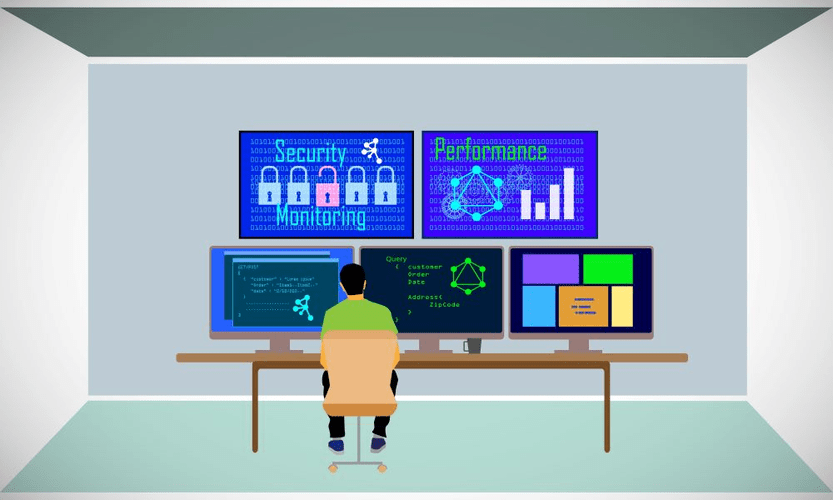Remember that to meet the requirements of each application and achieve workload optimization, most organizations will need a mix of both public and private clouds. In short, a multicloud, hybrid cloud approach gives you the best of both the private cloud and public cloud with the flexibility to run workloads where they make the most sense. You can mix and match the best features of each cloud provider’s services to suit the demands of your apps, workloads, and business by choosing different cloud providers. Although there are differences between public and private cloud platforms in terms of access, underneath the hood there isn’t all that much to differentiate the two.
Based on what we at Synopsys have seen in the last nine months alone, customers have never been keener to move their EDA workloads to the cloud. Setup Benefits – The protocols and configuration of a community cloud must align with industry standards, allowing customers to work much more efficiently. Function as a service is a service-hosted remote procedure call that leverages serverless computing to enable the deployment of individual functions in the cloud that run in response to events.
Benefits of Public Cloud Deployments
It helps them achieve lo ng-term digital goals as part of their digital strategy. Utility computing – The “packaging of computing resources, such as computation and storage, as a metered service similar to a traditional public utility, such as electricity.” Since the global pandemic of 2020, cloud technology has surged in popularity due to the level of data security it offers and the flexibility of working options cloud solutions and services it provides for all employees, notably remote workers. A consumer can unilaterally provision computing capabilities, such as server time and network storage, as needed automatically without requiring human interaction with each service provider. Tying this back to our analogy, a multi-cloud deployment is the equivalent to combining the use of multiple car services in order to get somewhere you need to be.
•A customer or tenant can have greater security control over more resources as one moves from SaaS to PaaS and again from PaaS to the IaaS service model. Intel® technologies’ features and benefits depend on system configuration and may require enabled hardware, software or service activation. The public cloud, powered by Intel, gives you additional capacity to speed your innovation. Cloud computing, if done right, takes away a lot of IT headaches from your day-to-day business. With a customer service that provides constant support, V2 Cloud has everything to help you start your journey. In order to help you understand this world of cloud computing, we created a glossary where you’ll find plenty of helpful definitions.
Cloud computing
In the software as a service model, users gain access to application software and databases. Cloud providers manage the infrastructure and platforms that run the applications. SaaS is sometimes referred to as “on-demand software” and is usually priced on a pay-per-use basis or using a subscription fee. In the SaaS model, cloud providers install and operate application software in the cloud and cloud users access the software from cloud clients. Cloud users do not manage the cloud infrastructure and platform where the application runs. This eliminates the need to install and run the application on the cloud user’s own computers, which simplifies maintenance and support.

A Public cloud computing deployment model means the IT services that you consume are hosted and delivered from a third party and accessed over the Internet. Services are available to the “public” to use, so any organization or end user can create an account with their credit card. In a hybrid cloud model, organizations use a combination of public and private cloud resources. The value in hybrid cloud comes from consistent underlying infrastructure and consistent operations. In order for you to make the most optimal use out of a particular cloud deployment type, you must understand what each of four common cloud deployment models can do. Studying for and earning cloud certificationsis an excellent way to deepen your understanding of the cloud.
Securing Cloud Computing Systems
From the practical experience, a comprehensive business analysis will often also give starting-points for an improvement of detailed or entire processes. So at the example of the lawyer office, we were able to detect optimization potentials in some of the internal workflows as well as in communication procedures with courts. PaaS is simple and very much convenient for the user as it can be accessed via a web browser.
- Governmental and organizational compliance regulations can dictate your model of choice.
- Cloud-based applications can be built on low-level infrastructure pieces or can use higher level services that provide abstraction from the management, architecting, and scaling requirements of core infrastructure.
- All this helps ensure your business gets exceptional value and performance, no matter how you’re consuming the cloud.
- A private cloud runs on infrastructure you own and is ideal when sensitive data is involved or when meeting high availability requirements.
- And as technologies make it easier to do so, more people are flipping between streaming apps to consume content in a variety of ways from a variety of providers.
However, choosing a public cloud is not always the most secure option for sensitive data. The private cloud deployment model is the exact opposite of the public cloud deployment model. The distinction between private and public clouds is in how you handle all of the hardware. It is also called the “internal cloud” & it refers to the ability to access systems and services within a given border or organization. The cloud platform is implemented in a cloud-based secure environment that is protected by powerful firewalls and under the supervision of an organization’s IT department.
Cloud Computing Deployment Models – Public, Private & Hybrid
Here are some factors which should be considered before choosing the best deployment model. If you are using a combination of public and private services, you have to make sure that all of your data has been properly separated. This can increase the security, compliance and auditing requirements of your business. Cost.If you are using a hybrid cloud, you can fall into the trap of spending too much.

Synopsys is a leading provider of electronic design automation solutions and services. On the basis of the former conducted business and security analysis the implementation and Migration Security Concept has to be developed. The migration starts with a realistic test scenario, which is executed by employees of the cloud customer with real applications, but mostly as a simulation and not in real service. During this subphase, the decision to keep staying in the former situation or to migrate has to be made and necessary changes in the concept of service provisioning by the CSP can be done. During each stage of the migration phase, a rollback to the beginning must be possible. Furthermore, it is important to describe the termination processes in the contract that includes the secure and complete erasure of all customer data and process information .
Cloud Deployment Model
An interesting effort in such direction is Cloud@Home, it aims to implement a cloud computing infrastructure using volunteered resources providing a business-model to incentivize contributions through financial restitution. Cloud computing has a rich history that extends back to the 1960s, with the initial concepts of time-sharing becoming popularized via Remote Job Entry . The “data center” model, where users submitted jobs to operators to run on mainframes, was predominantly used during this era. The cloud service providers fully subsidize the entire Infrastructure. Cloud-enabling an application requires that the application be able to interact with databases, middleware, and other applications using standards-based mechanisms such as Web services. Most legacy and client/server applications today do not have this capability natively.

The service provider manages virtually every layer of the cloud infrastructure. The difference with PaaS is that you are limited to a specific application. On the other hand, you can deploy a MySQL database and start writing data to it in a matter of minutes. You get a platform that does nothing by itself, on which you create something that works.
What Is Private Cloud?
Higher Cost – With the benefits you get, the investment will also be larger than the public cloud. Here, you will pay for software, hardware, and resources for staff and training. It works as your virtual computing environment with a choice of deployment https://www.globalcloudteam.com/ model depending on how much data you want to store and who has access to the Infrastructure. Client–server model – Client–server computing refers broadly to any distributed application that distinguishes between service providers and service requestors .


0 Comments